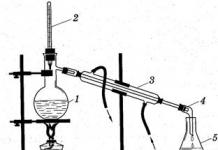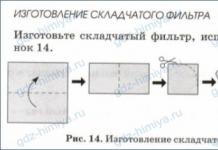During construction or renovation, specialists are increasingly abandoning the classical heating scheme in favor of an innovative floor heating system. Underfloor heating is a modern, convenient, efficient way to make your home warm and comfortable at any time of the year, without violating the style of the interior. This technology is widely used in residential, office and industrial buildings.
Habitual heating includes radiators that heat the air only at the window. At the same time, as a result of convection, the warm flow rises from the heating devices, gradually cools and falls down, returning along the floor to the radiator. With such a heating scheme, the distribution of heat is uneven, the warmest place is at the ceiling, and the coldest is at the bottom.

The warm floor consists of a base, a heating element distributed throughout the room, auxiliary elements (sensors, thermostats, couplings) and a decorative coating. Floor heating occurs evenly throughout the room to the same temperature.
Benefits of underfloor heating:
- large heat transfer area;
- no convection;
- decrease in humidity;
- possibility of regulation in separate rooms;
- environmental friendliness;
- safety (subject to installation technique).
On a note: underfloor heating can be the sole or auxiliary heating system.
Disadvantages of "warm floor":
- clear requirements for finishing;
- high cost of the system and installation;
- the need to dismantle the top coating during repairs.

Classification of heating elements
Depending on the heating element, warm floors are divided into several types, each of which has its own installation features.
Table 1. Varieties of underfloor heating
| Properties | Water heated floor | Cable underfloor heating | |
|---|---|---|---|
| Heating element type | Hot water pipes | IR film, IR rods | Cable |
| Installation time | From 4-5 days | 1 day | 1 day |
| Application | Floor | Floor, ceiling, walls. | Floor |
| Repair | Only defective segments are subject to repair, the rest of the system works | If a single section is damaged, the entire system fails. | |
| Maintenance | Required | Not required | Not required |
| Zoning | Impossible | Maybe | Maybe |
| Installation cost | High installation costs, low operating costs | High equipment costs, low operating | Relatively inexpensive installation, high energy costs |
| Possibility of use in multi-storey buildings | No | Yes | Yes |
| Life time | Up to 50 years old | Up to 15 years | Up to 25 years old |
Warmstad floor heating prices
underfloor heating warmstad
Electric heated floors: detailed characteristics
The most common system at present has become an electric floor heating system. A variety of cables that convert current energy into heat are a heating element. Mandatory installation of thermal insulation, grounding, installation of thermostats of varying complexity. Automatic sensors are able to turn on the system power when the temperature drops, and the thermostat maintains the set parameters on the surface. The compact control and adjustment system saves space, the connection is made for each room separately.

On a note: installation of an electric heating system does not require approval if the total power consumption of electricity does not exceed 15 kW.
Advantages of electric underfloor heating:
- this is the best option for an apartment (the risks of causing inconvenience to neighbors are minimized; installation does not need to be coordinated);
- heat up quickly when turned on;
- the ability to maintain a constant temperature;
- safety;
- compactness of adjusting devices;
- Ease of Management;
- long service life.
The main disadvantage of such a system is the high cost of electricity, even with high-quality insulation of the premises, the operating costs will be significant.
Electric underfloor heating cable type
For the installation of underfloor heating, resistive or self-regulating types of cable are used. They are used in rooms with a complex layout, because they can be laid in any configuration.

When choosing the type of cable, the power of heat transfer, as well as the area and volume of the room, are taken into account.
In a single-core resistive cable, heat is generated by one conductive core. It heats up quickly and has a constant heat transfer along the length, overheating is possible in some areas. Such a cable is connected to electricity from two sides, i.e. during installation, you need to lay it out in a loop so that the beginning and end converge in one place, or lay another supply wire. This is the cheapest option, but it emits strong electromagnetic radiation.
A two-core resistive cable consists of two cores, one is used to generate heat (then the other will be a conductive element) or both. It has two layers of insulation, which eliminates short circuits. A two-core cable is more convenient to use, power is supplied only from one end, and a sealed coupling is installed on the other. It has a higher degree of electromagnetic protection.

Resistive cables are distinguished by their simplicity of design, low price, increased power and stability of characteristics over the entire service life. But they are sold in segments of a certain length, they cannot be cut arbitrarily, so if one section breaks, the entire section has to be replaced.

Self-regulating heating cable has a different principle of operation and structure. It changes the heating power when the temperature around it changes, provides uniform heating of the entire floor surface with minimal electricity consumption. The design of such a cable is more complicated: in addition to conductive cores, it has a polymer semiconductor matrix, which is a heating element and allows you to control the temperature. In the event of a breakdown, only a section of the cable can be replaced. This heating element has reliable protection, safe and durable. With significant heating power, the self-regulating cable is economical and can be cut into sections of any length when laying. The disadvantage is the high price.
Electrical cable system is widely used in combination with any decorative coating.
Heating resistive mats
The heating mat is a fiberglass mesh base with a two-wire cable attached to it. They simplify and speed up the laying of underfloor heating, because the cable is already fixed to them with a certain step. Porcelain stoneware or ceramic tiles are ideally combined with this system as a decorative floor, while an additional screed is not made, and the heating element is mounted in a layer of tile adhesive. This is a reliable, durable and safe technology for creating a warm floor.

It is very convenient to use mats in certain areas - in the kitchen, in the bathroom, in the corridor where you take off your shoes. Although they are also used as the only source of heating for the entire room. It is necessary to carefully consider the selection of power mats, high-quality cable and regulators. In order not to waste electricity, you need to choose mats so that at the lowest power they heat the room to the desired temperature.
With the choice of high-quality materials, proper installation and operation, this type of "warm floor" is durable and reliable.

Warm floor infrared principle of action
The infrared floor is universal and suitable for any type of housing.
It differs in the way of energy transfer, heat transfer occurs through the action of an electric current on carbon elements, which creates infrared radiation that heats the floor.

There are two types of infrared elements:
- film;
- rod.
Film - a thin polymer film, inside of which there are copper conductive tires and graphite paste is soldered. The thickness of this film is less than 5 mm. The intensity of heating is controlled by a regulator.
The great advantage of infrared film is its easy installation. A screed is not required, but a layer of a heat-reflecting substrate must be laid from below.

Infrared underfloor heating is efficient, economical and reliable. The film is characterized by high heat transfer at low energy costs.

The disadvantage of IR film is that it is afraid of overheating (200°C and above), so it is not placed under heavy household appliances and furniture.
Rod infrared mats are tubes filled with carbon composition, which are connected in parallel to two busbars in polymer insulation.

Each rod functions independently, and if one or more of them fails, the system will still work. Carbon rods are self-regulating; when the ambient temperature changes, the amount of heat generated changes. The system necessarily includes a thermostat and a floor temperature sensor, if they are not installed, then the heating elements will work constantly at the same power, and this is not economically viable.

Advantages of rod infrared mats:
- ease of installation;
- profitability (electricity costs are less than 60% compared to cable systems);
- versatility of application;
- the ability to combine with any decorative coating;
- environmental friendliness and fire safety;
- The room warms up quickly and evenly.
The disadvantages are the high price and short service life - up to 10 years.
Calculation of electric floor heating
It is necessary to determine the optimal power of a warm floor in order to ensure a comfortable temperature in the room with minimal electricity costs.
Let's use the formula:
P \u003d S floor xR 0
where P is the power of the heated floor, W; S floor - usable area of the room, m²; P 0 - specific power, W / m².
The useful area of the room is the area free from furniture and heavy objects, on which a warm floor is laid.
We take the specific power according to the reference table, depending on the room, these data are used if the warm floor is additional heating. For main heating, the power is 160 - 180 W / m².
Table 2. Specific power
Let's look at an example. Given: living room on the 2nd floor, 25 m², furniture occupies 4.2 m². It is necessary to find the power of the warm floor, provided that this is an additional source of heating.
S floor \u003d 25 - 4.2 \u003d 20.8 m²
According to the table, we accept P 0 \u003d 120 W / m².
P \u003d 20.8x120 \u003d 2496 W
Also, to determine the power of a warm floor, you can use the online calculator.
We consider the technology of laying an electric underfloor heating in our
How to make an infrared floor heating
Step 1. To perform the installation correctly, you need to draw a room plan, mark the areas where the furniture will be located, and calculate the area for laying the IR film. At the same time, you need to know that if the IR system is the only source of heating in the room, then the film should occupy 80% of the area, if additional - 40-50%.

On the usable area, it is necessary to place sections in such a way that they fill the entire room as much as possible, but do not cross. 15–20 cm are indented from each wall. It is optimal to arrange the strips in length (no more than 8 m), in order to minimize the number of connection points, a transverse arrangement is also allowed.
Step 2. When choosing materials, it is taken into account that the thickness of the film is selected depending on the decorative floor covering, the room and the type of heating system.
Table 3. Thermal film power
For saunas and industrial use, a film with a power of more than 220 W / m² is intended.
It is optimal to choose a film 0.3 mm thick, it is durable and resistant to deformation. For a small room, it is advisable to purchase material 50 cm wide.
A set of warm infrared floor includes: thermostat, temperature sensors, connecting clips, cables, IR film.
Step 3 The next step is to mount the thermostat. The diagram shows the installation location of the thermostat, connecting contacts and sensors. It is placed at a height of 15–20 cm.

For laying the cable, a vertical hole is drilled in the wall to the place where the thermostat is attached. Electricity is supplied from the nearest outlet, it is better to place the wiring in a plastic corrugated pipe.
On a note: to reduce the length of the wire used, it is recommended to place the temperature controller on the wall, perpendicular to the direction of laying the strips.

Step 4 The carbon film is mounted on a perfectly even, cleaned base. The floor must be thoroughly cleaned of dirt and dust, and the horizontal surface must also be checked. Permissible height difference is not more than 3 mm. If necessary, fill the cracks and pour a thin concrete screed or leveling mixture.

Step 5 Laying waterproofing will protect the system from moisture coming from below. To do this, use a polyethylene film no thinner than 50 microns, the joints are connected with a sealing adhesive tape.

Step 6 Isolon, Penofol, cork substrate, foil coating are used as thermal insulation. The layer thickness should be 3–5 mm. The substrate is placed over the entire area close to the walls, the joints are fastened with masking or aluminum tape.

Step 7 We cut the film into strips of the desired size. You can cut the IR film only in the places indicated by the manufacturer; you cannot cut the material at an angle.

Step 8 We lay out the strips according to the plan, retreating from the walls 10–20 cm. At the same time, copper tires are placed from below. The distance between the canvases is 1-2 cm, they are fixed with hot-melt adhesive or double-sided tape.

Step 9 To connect the cable to the film, special clamps are used. One side of the clip is placed between the film and the copper strip, and the other side is on the busbar.

Wires are inserted into the already installed clamp and processed with pliers. The wires to the terminals are mounted in parallel, i.e. left only with left, and right with right. The connections are insulated and tightly crimped.
Step 10 The wires connecting the warm floor to the network and the thermostat are laid to the wall and put into the baseboard.
A groove is made in the thermal insulation, sections of the wire protruding above the film are laid there, fixed with adhesive tape.

Step 11 The points of contact of the electrical wires and the cutting lines of the copper bus are insulated with vinyl - with mastic tape on both sides.

Step 12 The temperature sensor is attached to the graphite strip with aluminum tape, as close as possible to the thermostat, but at a distance of at least 50 cm from the wall.

Step 13 The temperature sensor is isolated and connected with a wire to the thermostat.

All connections are insulated with special overlays
Video - Installation instructions for infrared floor heating
Water heated floor
Water floor heating is a system of bendable tubes through which hot water circulates, supplied from a gas or

Water heating must not be used in apartments above the first floor, provided that there are no living quarters in the basement or basement. Therefore, it is used in private houses with individual water supply, and in multi-apartment buildings, if the system was originally provided for by the project. The law prohibits unauthorized connection to central heating and hot water supply.

With the concrete method, the pipes are laid under a screed with a thickness of at least 3 mm, a decorative floor covering can be done no earlier than after 28 days.

If you need to reduce the load on the floors, or the height of the room is limited, a floor laying system is used. Pipes are placed on polystyrene foam mats, and a screed is poured on top.

In houses with wooden floors, pipes are laid in wooden grooves.

Despite the complexity of installation, the water floor system is cost-effective and durable. The main disadvantage is the possibility of leakage and the complexity of repair. It is not recommended to use a warm water floor as the main heating in the house.
Video - Installation instructions for water heater
Choice of underfloor heating finishes
It depends on the purpose of the room, type of underfloor heating, budget and personal preferences of the owner. What should you pay attention to?
First of all, not every type of coating is compatible with one or another type of underfloor heating. For example, parquet is not recommended for use with a cable system due to the risk of overheating and fire.
Ceramic tiles and porcelain tiles are a universal option for any underfloor heating. It is resistant to high temperatures, moisture and pollution. Tile is an environmentally friendly material that does not emit harmful substances even when exposed to high temperatures. It has a high thermal conductivity, which means it heats up quickly. For underfloor heating, it is advisable to choose tiles of small thickness.

When choosing a laminate as a topcoat, you need to take into account its features. Laminate can be used if the heating elements of the system are distributed evenly over the entire area of the room, their heating temperature does not exceed 27-30°C.

When buying, we choose a laminate of class 32 and above, the optimal thickness of the board is 8–10 mm.
There should be icons on the packaging saying that this material can be combined with underfloor heating. Low formaldehyde content is denoted by E0 and E1.
Linoleum and vinyl coating have good elasticity and moisture resistance. With a warm floor, thin linoleum is used without insulation on a smooth base. So that it does not change its properties, the optimum heating temperature should be no more than 27 ° C. When choosing this material, it is important to pay attention to the markings.

It is inefficient to use cork in combination with a warm floor due to low thermal conductivity, but, if necessary, a glue-free cork coating is used.
When choosing a carpet for underfloor heating, natural materials are preferred, since synthetics emit harmful substances when heated. The operating temperature of the underfloor heating system when using carpet is projected 3-5 degrees more. The length of the pile affects the thermal conductivity of the carpet, the best choice would be a thin carpet with a short pile of wool or felt.
When buying a decorative floor covering, ask the seller for a certificate for this material, which will indicate its detailed characteristics and conditions of use.
Properly selected underfloor heating can be used with any floor covering. A large number of options for floor heating systems, modern materials allow you to install them in rooms for various purposes and operating conditions. It is important to observe the power of the heating system and not to exceed the permissible operating temperature of the finish coat.
In construction and renovation, more and more people choose to install underfloor heating in their homes. Usually, underfloor heating is installed in the kitchen and bathroom, and sometimes in other rooms. The heat emanating from the floor gives a pleasant feeling and even allows you to warm up the entire space. What type of floor heating is the most economical and convenient? How to perform such an installation, what is the price and how much does the underfloor heating cost?
Among underfloor heating installations, we can distinguish the two most common types: electric and water floor heating. Therefore, if you decide to install underfloor heating in your house, it is important to know the features of each system, the advantages, disadvantages and, of course, how much the installation and materials cost.
Underfloor heating is electric – very easy to install and aesthetically pleasing because it does not require central heating or a boiler. Electric heating can be made up of cables, a heating mat, or a polyester film that has aluminum wire in it. When electricity flows through the hoses, they heat up and release heat that spreads throughout the room. The most commonly used mats or cables. Due to the simple installation and the lack of a boiler, electric floor heating is convenient to use. Unfortunately, due to high electricity prices, electric floor heating is not the most economical – operating costs can be up to 2 times higher than with standard floor heating.
Underfloor heating with water is the most popular type of underfloor heating, consisting of heating pipes (copper or plastic) located directly under the floor. As the name suggests, heat is distributed throughout the room using hot water (around 40-50°C) flowing in pipes. Installing hot water heating is quite expensive because it requires the purchase of a heating boiler and the installation of controllers and heat pumps, as well as the implementation of the entire central heating system. However, when used, this type of floor heating in a house is much cheaper than electric heating, so it can be considered a good investment.
In addition to the two main types of underfloor heating, the less common air heating is also worth mentioning. This is an innovative Swedish method that involves the flow of heated air through channels located directly in the floor or on the foundation of the house.
Underfloor heating in the house: advantages and disadvantages of underfloor heating
Benefits of underfloor heating
Considering the installation of underfloor heating, it is worth analyzing its best and worst sides. The undoubted advantage of this solution is aesthetics: the heating elements are not visible and do not take up space in the room or bathroom. In addition, due to the spiral arrangement of electrical wires or pipes, heat is distributed more evenly throughout the room. Underfloor heating is also more beneficial for our body, because the higher temperature on the ground and the lower one at head level has a positive effect on health and well-being. Therefore, in rooms with underfloor heating, the temperature may be slightly lower than in traditional radiators - it will not be felt by us.
Disadvantages of underfloor heating
Despite the many advantages, underfloor heating in the house also has its drawbacks. First of all, if the installation fails or fails, the repair is quite troublesome because it involves the need to break the floor. This type of heating also imposes certain restrictions on the furnishing of the room: if we install too much furniture on the heated floor and cover it with carpet, the heating efficiency will be much lower.
Underfloor heating is also characterized by the so-called thermal inertia, which means that it does not “rise” quickly and cool down slowly, so it is not easy to adjust the degree of heating of the room depending on changing needs. The negative aspects of underfloor heating also include the costs associated with installing it: engineering, purchasing all heating elements and controllers, and professional installation makes underfloor heating about 40% more expensive than conventional heaters. The advantage, however, lies in the inexpensive operation - in the case of water heating.
Electric floor heating: calculation and installation
Today, electric floor heating is not uncommon, but the most necessary, especially if tiles are laid on the floor in the bathroom or in the bathroom. The design of a warm floor with electric heating is based on a multilayer heating cable, which, when heated from passing through it, allows you to convert electricity into heat.
Also, in addition to heating cables, at the present time one can also find a special infrared film (the so-called) in the design of underfloor heating. The principle of operation of infrared warm floors is based on the conversion of electricity into infrared radiation.
Consider the basic design of electrically heated floors, as well as the possibility of installing them yourself.

After all the necessary calculations have been made, and the materials for the underfloor heating have been purchased, you can proceed to the independent work.
Electric floor heating: do-it-yourself installation
So, consider the basic order of installation of floors with electric heating:
The first thing to do is prepare the floor. You may need to pour a small screed if you need to level the base or adjust it to a certain height. The main thing is that the base on which the warm floor was laid would be strong enough and without strong differences in level.

The second step is to install . To this end, on the wall in a room with underfloor heating, a small recess should be made in depth to install the box under the thermostat. In this case, the height of the box from the floor should be within 0.5-1 meters. In addition, from the box down to the floor, you need to make a small groove, which will be designed for laying wires.
At the third stage, foil insulation should be laid on the floor, securely connecting the joints with adhesive tape. Next, on top of the insulation, you will need to fix the mounting tape under the warm floors (in increments of 0.5-1 m) using screws or self-tapping screws.

Then, power supply and ground wires for underfloor heating are connected to the box in the wall, after which the heating elements are fastened to the mounting tape according to the “loop” or “parallel lines” scheme.
At the final stage, a temperature sensor should be placed between the two heating elements of underfloor heating. For these purposes, you should take a piece of corrugated pipe, plug one end on it, after which, placing it between the heating cables, insert the temperature sensor inside.

After all the elements of the heated floor with electric heating are laid, you can connect the heating cable and temperature sensor to the thermostat. Now it remains to check how the warm floor works, measure and compare its resistance with the value indicated by the manufacturer, after which, you can start pouring a thin screed.
Choosing the type and installation of underfloor heating
Full heating of the room gives a much greater effect than local heating with a heater or battery. Full underfloor heating means underfloor heating. This method of heating a room was used in ancient Rome. At that time, the prototype of the modern underfloor heating looked like a stove with a pipe running under the floor and releasing gas. Today underfloor heating works much safer as it uses either water or electricity for heating.
There are three types of underfloor heating:
- electrical,
- water,
- infrared.
Electric underfloor heating
Since electricity is an environmentally friendly energy carrier, this method is used in various buildings and premises. Floor heating is carried out using a one- or two-wire resistive cable. In the case of a single-wire resistive cable, a single high-resistance conductor is used. In a two-level cable, a copper conductor is laid along with a resistive one.

Also read articles:
Outside, an insulating and heat-resistant sheath is used, as well as a sheath with grounding.

Heated water floors
Heated water floors are a structure of pipes with hot water supplied from a gas or electric boiler. This is the most economical type of underfloor heating. The downside is that heated water floors are not allowed to be installed in apartments of multi-storey buildings, with the exception of the first floors.

Heated water floors are optimal for cottages and private houses.
Infrared heated floors
This type of floors appeared on the construction market relatively recently. For the operation of such floors, a film with infrared radiation is used. Anatomically, it looks like strips made of carbon conductors embedded in a film of polymers. The thickness of such a film is only 0.4 mm. Its main advantages include ease of installation and work without a screed. Infrared floors are not characterized by harmful radiation. They are more economical in comparison with the two previous types of floors. When choosing a flooring over a film, you need to consider that some of them may not withstand heat. These types of coatings include parquet floors and lacquered flooring.

How to install underfloor heating?
Electric floor coverings can be used:
- as the main method of heating;
- as an extra.
So, if the electric floors will be used as the main source of heating, then it should be no less than 5 cm. In this case, the area of the installed floors should be about 70% of the entire area of \u200b\u200bthe room. As an additional source of heating, electric floors are used to maintain a common microclimate in conjunction with other heating devices. To this end, they are used for bathrooms and pools, as well as for apartments on the ground floors.
Before starting the installation of underfloor heating, you need to make sure that the wiring is ready to connect additional power. You should also know what allowable current can pass through the fuses.

Installation of concrete water floors takes place in several stages:
- The entire room must be divided into equal sections, their area should not exceed 40 square meters.
- The rough surface of the floor must be covered with insulation materials.
- Next, lay the reinforcing mesh and install the pipe contours.
- With the heating system, you need to do pressure testing.
- from concrete.
- After all the above steps, you can proceed to the finishing work.
The marking of the room is necessary in order to avoid cracks in the concrete screed during temperature changes. The ratio of plots should be 1:2.

There are many ways to lay pipes, for example:
- spiral,
- double snake,
- snake.
However, it should be borne in mind that when installing pipes in internal walls, you need to take a step as small as possible. At one end, the pipe must always be attached to the supply manifold, and at the other - according to the design scheme.


















